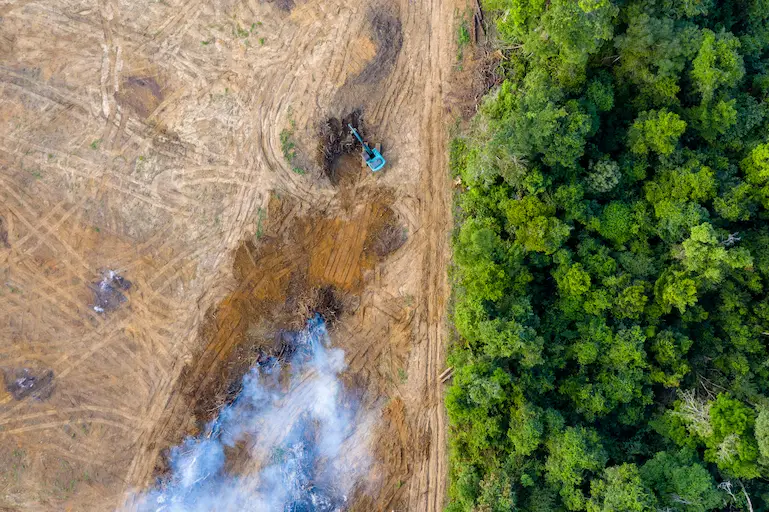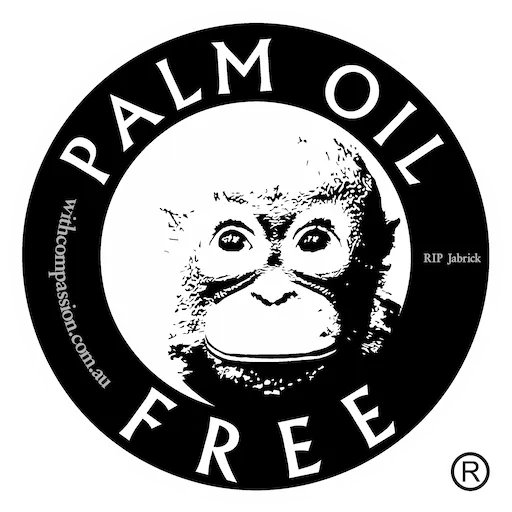The palm oil problem: Is a lab grown alternative the solution?


Palm oil has been in the spotlight for years — and for good reason. It’s found in around half of all supermarket products, and its environmental cost is enormous.
But with demand continuing to rise and supply chains deeply entrenched, the question remains: what’s the real solution to the palm oil problem? Could a lab-grown alternative be the breakthrough we’ve been waiting for?
Key takeaways
- Palm oil is everywhere — often hidden under unfamiliar names in food, cosmetics, and cleaning products.
- Its production is a major driver of deforestation, biodiversity loss, and human rights abuses.
- Lab-grown alternatives like NoPalm Ingredients are showing promise, offering a potential future without environmental destruction.
- UK innovation is growing — companies like Clean Food Group are developing scalable solutions.
- Certified palm oil free brands like Amaranthine already offer an ethical alternative, without waiting for lab-grown options.
What is palm oil?
Palm oil is an edible vegetable oil that comes from the fruit of the oil palm tree (Elaeis guineensis).
Oil palm trees are native to West Africa but were introduced to Southeast Asia just over 100 years ago as ornamental crops. Today, Indonesia and Malaysia account for over 85% of global supply, though palm oil is now produced in more than 40 countries. [WWF]
It’s found in everything from biscuits to lipstick, and its versatility makes it hard to avoid.
Why palm oil is still a problem
Palm oil is cheap, efficient, and extremely high-yielding — which makes it appealing to big industries. But the environmental and human cost is enormous:
- Rainforests are destroyed to make way for plantations
- Carbon-rich peatlands are burned, releasing over 1.5 billion tonnes of CO₂ annually
- Wildlife like orangutans and Sumatran tigers are losing their habitats
- Indigenous communities are displaced, and labour exploitation is common
Even in cosmetics, palm oil hides behind names like palmate, cetyl alcohol, glyceryl stearate, and lauryl sulfate — making it hard to spot on labels.

What about “sustainable” palm oil?
Many brands now claim to use “sustainable palm oil,” often through RSPO (Roundtable on Sustainable Palm Oil) certification. But the RSPO has long faced criticism for weak enforcement and lack of transparency.
A 2024 report by the Environmental Investigation Agency found that RSPO standards still contain loopholes and cannot guarantee full compliance with new EU or UK deforestation regulations. Auditors are often hired directly by the companies they assess, raising serious concerns about conflicts of interest. [EIA report]
While the idea of “sustainable” palm oil is appealing, the reality is that it’s difficult to trace and rarely as ethical as it sounds.
Could lab-grown palm oil be the future?
In recent years, biotech companies have been racing to create viable, scalable alternatives — oils that perform like palm oil but without the environmental fallout.
C16 Biosciences: Palmless™ (USA)
Backed by Bill Gates’ Breakthrough Energy Ventures, C16 Biosciences has developed Palmless™, a bio-manufactured oil made from yeast fermentation.
- Rich in carotenoids and sterols
- Bioequivalent to palm oil in structure and performance
- Created without deforestation or exploitation
- Working toward full commercial scale, with early interest from the beauty industry
Palmless™ is being positioned as a “next-generation beauty oil” — a sustainable ingredient designed to replace palm oil in personal care products.
Clean Food Group (UK)
Closer to home, Clean Food Group, a UK-based food tech startup, is also working on a yeast-based alternative. Developed by scientists at the University of Bath, their oil is now entering scale-up phases after investment from food ingredient supplier Doehler.
Like Palmless™, it’s bioidentical to palm oil — offering the same stability, texture, and performance.
NoPalm Ingredients (Netherlands)
Dutch company NoPalm Ingredients is taking a circular economy approach — using upcycled waste, such as fruit pulp and potato starch, to produce microbial oils through fermentation.
- Designed for cosmetics, food, and personal care
- No deforestation or tropical agriculture required
- Created in Europe using a zero-waste process
This approach reduces palm oil demand while repurposing food industry by-products — a win-win for sustainability.
Why Amaranthine is certified palm oil free
At Amaranthine, I've always taken a different approach. From day one, my mission has been to make natural skincare that cares for both skin and planet. That’s why I went 100% palm oil free.
I'm proud to be the first skincare company in the world to receive the Palm Oil Free Certification Trademark. Every ingredient I use is carefully selected and verified to be free from palm oil and its derivatives — no greenwashing, no loopholes.

Final thoughts
The palm oil problem isn’t going away overnight. It’s deeply rooted in global supply chains, consumer demand, and economic systems that favour low cost over long-term impact.
But progress is happening — from lab-grown oils to circular solutions and transparent, certified brands that are already showing another way.
At Amaranthine, I believe skincare should nourish your skin without harming rainforests, animals, or communities. And I believe customers deserve honest, sustainable choices — not just promises on a label.
By staying informed, asking questions, and supporting truly ethical alternatives, we can help push the beauty industry — and beyond — in the right direction.
References
Lab grown palm oil information sourced from c16bio.com, cleanfood.group and gopalmless.com
Environmental Investigation Agency. The RSPO’s Rules on Deforestation, Legality and Traceability. 2024.
https://eia-international.org/report/the-rspos-rules-on-deforestation-legality-and-traceability
WWF UK. 8 things to know about palm oil
https://www.wwf.org.uk/updates/8-things-know-about-palm-oil
Article updated August 2025







